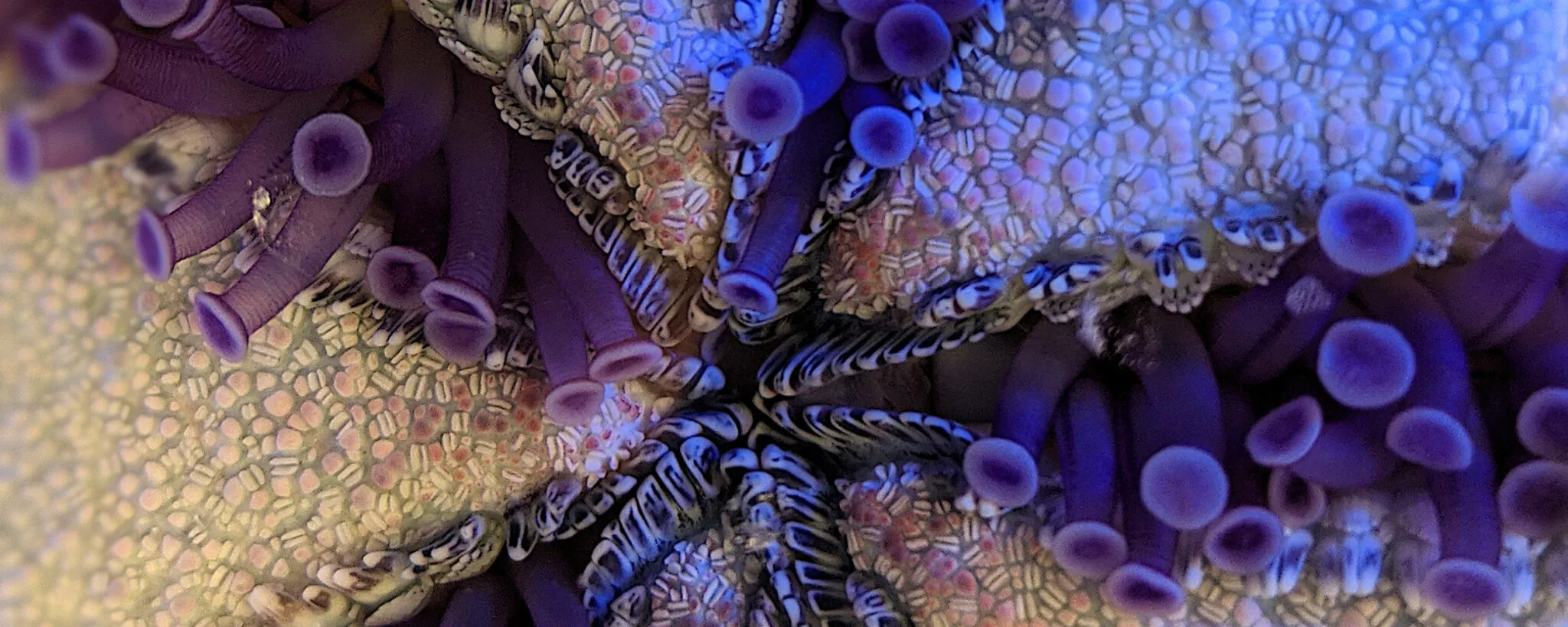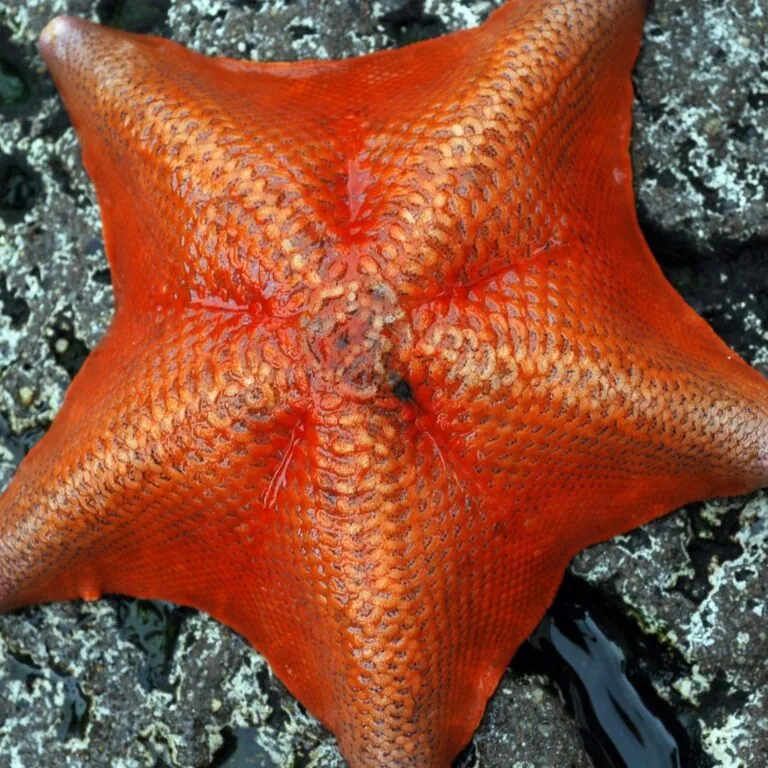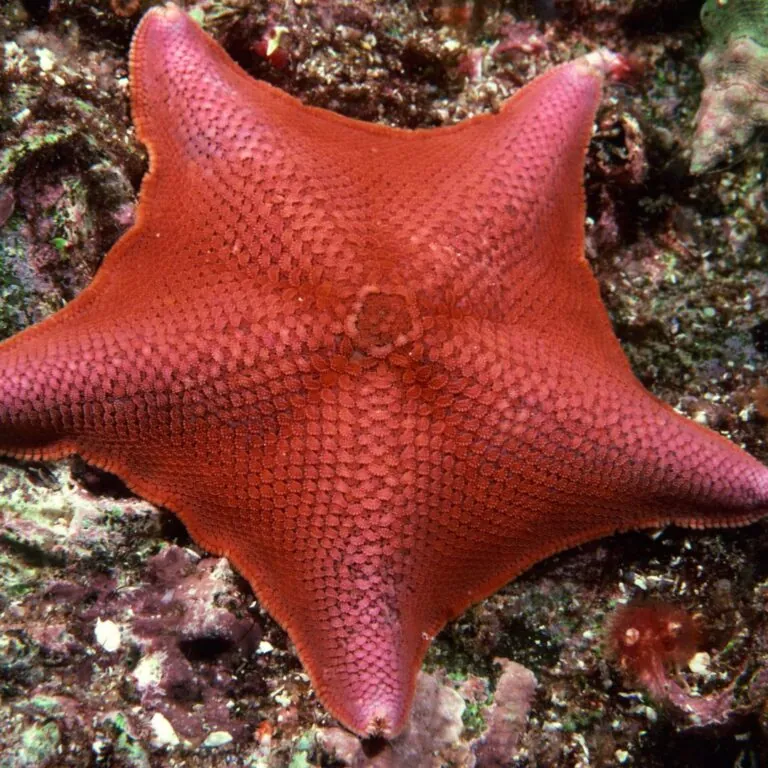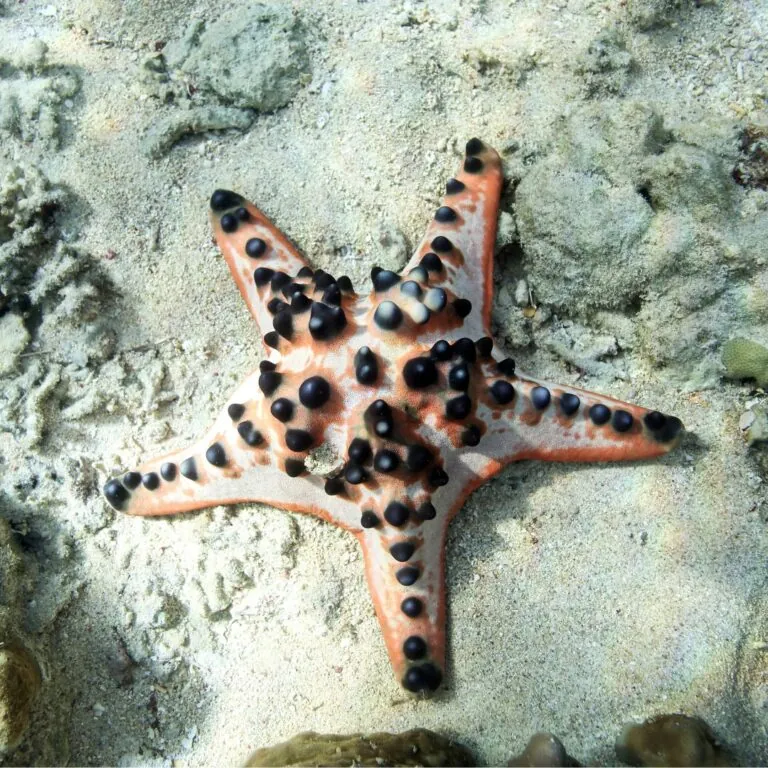-
Menu
- Plan Your Visit
- Meet The Animals
- Check Out Events
- Memberships
- About The Zoo
- Support the Zoo
- Conservation
- Education
- Groups & Private Events
- Zoo News
- Contact
- Zoo Store
- Indianapolis Prize
- Global Center for Species Survival
- Schedule
- Donate
- Membership
- Tickets

- Plan Your Visit
- Meet The Animals
- Check Out Events
- Memberships
- About The Zoo
- Support the Zoo
- Conservation
- Education
- Groups & Private Events
- Zoo News
- Contact
- Zoo Store
- Indianapolis Prize
- Global Center for Species Survival

Sea Stars
About
Although sea stars are often called “starfish,” they’re not related to fish at all! Sea stars are invertebrates with radial symmetry and tube feet that help them move using water pressure. In their larval form, they swim using tiny hairlike cilia on their body.
Sea stars are often found under rocks or in crevices. Their mouth, on the underside of their body, has no teeth. When feeding, sea stars wrap their arms around their prey and push their stomach out of their mouth to eat their food. They’re toxic to some predators, but if captured, sea stars can drop an arm to try to escape. They can regrow lost arms—and even an entire new body from a single arm and part of the central disc of their body!

Conservation
Many sea stars have not been evaluated for threats to their survival yet. Sea stars are a good species to monitor reef health. You can help protect ocean wildlife by choosing sustainable seafood. The Seafood Watch program can teach you how!
WHERE ARE THEY AT THE ZOO?


Bat sea star (Patiria miniata)
4–8 inches wide; Eastern Pacific Ocean.
IUCN Red List status: Not Evaluated

Chocolate chip sea star (Protoreaster nodosus)
Up to 12 inches wide; Indo-West Pacific Ocean.
IUCN Red List status: Not Evaluated
